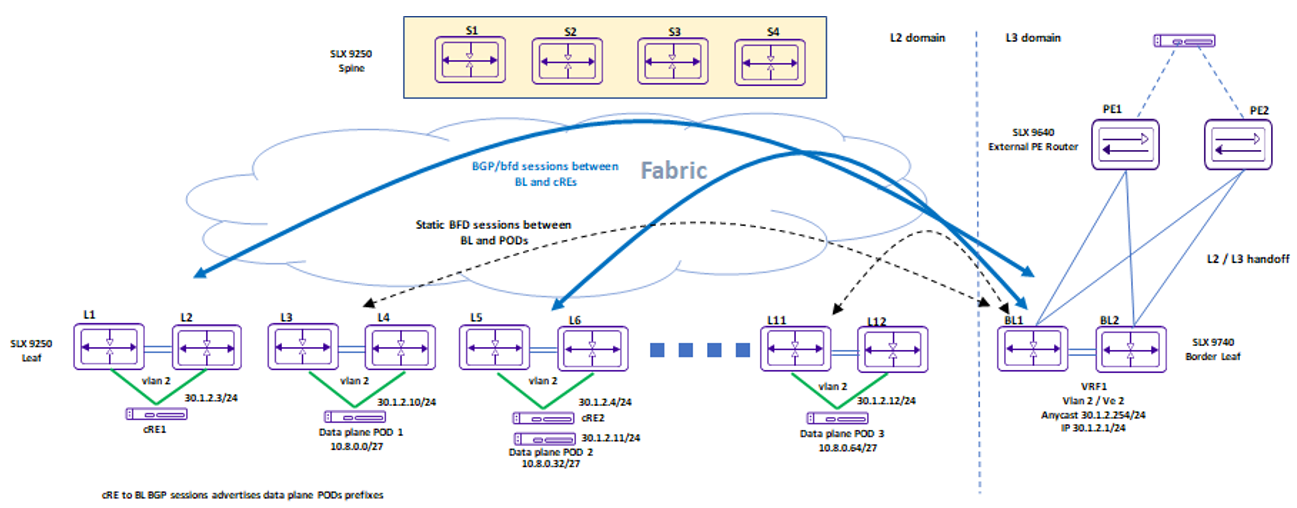Configure physical routers for centralized routing on Tenant VRF
Provide a list of border-leaf IPs on which the centralized router (VRF) needs to be instantiated. If a given fabric has only one BL pair and you have not provided any BL pair as centralized router, then the only available BL pair is used as centralized router by default.
Provide only one BL pair on which the centailized router (VRF) needs to be instantiated.
VRF instantiation happens on the border-leaf devices during the EPG (endpoint group) create or update operations.
You can't provide leaf, spine, or super-spine IPs as the target device for centralized routing.
VRF (with centralized routing enabled) and its dependent L3 configuration (anycast-ip, local-ip, VRF static route, VRF static route bfd, router bgp static or dynamic peer, and router bgp peer-group) are instantiated only on the border-leaf(s) on which the parent VRF exists.

- Define the target border-leaf
device on which the VRF needs to be instantiated.
The VRF instantiation happens only on those border-leaf devices and not on any other leaf or border-leaf devices.
- You do not need to provide
the target border-leaf device on which the anycast-ip needs to be
configured.
The anycast-ip configuration happens automatically on the border-leaf devices on which the VRF is instantiated.
- Provide the border-leaf IP (on which the VRF is instantiated) for the local-ip configuration.
- Provide the border-leaf ip (on which the VRF is instantiated) for the VRF SR (Static Route) and VRF SR-BFD (Static Route – BFD) configuration.
- Provide the border-leaf ip (on which the VRF is instantiated) for the BGP static and dynamic peer configuration.
- Provide the border-leaf ip (on which the VRF is instantiated) for the BGP peer-group configuration.
